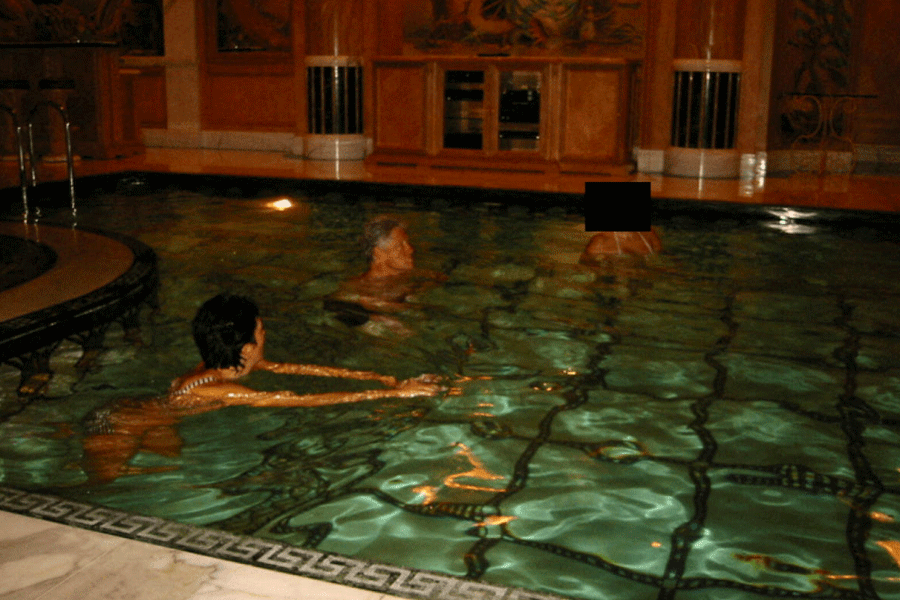 |
| Anatra all’ Aranica (duck with orange) |
The other day, a friend came back from Tuscany, carrying a gift for me. It was a tin of olive oil, which, he graciously told me, was used by the Mona Lisa. I was impressed — but a little less so when I realised he meant not that particular can, which would make it really, really ancient, but the type of olive oil. It came from Vignamaggio — once the estate of the Gherardinis. And undoubtedly, the best known of the Gherardini girls was the one with the inscrutable smile.
The olive oil is being used judiciously, but it’s got me thinking about Tuscany — and all that the Italian region has to offer. And as it always happens, when I am on a particular subject, something occurs somewhere to add to my thinking. This time, I got a call from the Hotel Hindustan International (HHI) in Calcutta. Their new executive chef, I was told, was from Tuscany, and was thinking of producing some special Tuscan dishes at the Mythh, the hotel’s coffee shop.
 |
| Pappa al Pomodoro (tuscany style tomato |
I’d met Davide Cananzi earlier in Calcutta, and then lost touch with him. The chef, who has been living in Calcutta for the last six years, came to the city to join the Hyatt and help the hotel start its Italian restaurant, La Cucina.
The chef is at his expansive best when he describes the food of his region — which he believes is Italy’s best cuisine, for it harks back to the Florentine Renaissance. He believes that his recipe for duck with orange — which I shall share with you on another occasion — is steeped as much in history as in flavours.
Chef Cananzi has surprises in store for the food lover. Apart from a dish of chicken liver, anchovy and capers, he is proud of his tortelli di patate, or potato tortelli, a dish of potatoes, eggs, cheese and pasta. And his Tuscany-style tomato soup — pappa al pomodoro — is particularly good for a rain day, flavoured as it is with garlic and basil.
 |
| Tortelli di Patate (potato tortelli) |
Another well-known Tuscan dish is the bistecca ala fiorentina — steak Florentine style. I would suggest you eat this if you are particularly hungry and brave. My Italian food guru Antonio Carluccio stresses that each steak — a T-bone cut from the Chiana cow — weighs at least a kilo. You brush the meat with olive oil and sprinkle salt on it. Then you grill it over charcoal for only a few minutes on each side. That captures the flavour and tenderness of the meat, says Carluccio.
Clearly, meat figures quite prominently on the Tuscan table. Elsewhere, it is often used to flavour a sauce. In Tuscany, it figures in various shapes and forms. For instance, another favourite of Tuscany is the roasted suckling pig.
The region has yet another tradition that is now followed by not just the rest of Italy, but in many other parts of the world. Apparently, it was Tuscany which first started dipping biscuits into a strong wine after a meal. To finish a meal, you bite into Tuscan almond biscuits — or cantucci — dipped in wine. Or you could, of course, end a meal with chef Cananzi’s castagnaccio or chestnut cake, cooked with chestnut flour, raisins, pine nuts and rosemary.
I like the 53-year-old chef’s passion. Culinary skills clearly run in his veins, for his mother too was an executive chef of a Sardinia hotel. He tells me his strength lies in his eye for details, and his weakness is his hot temper. I salute the former, and wish him success with the latter.
Crostini ai fegatini (chicken liver crostini)
(serves 8)
 |
Ingredients
• 250g chicken liver • 4 anchovy fillets • 60g capers • 45g butter • 1 finely chopped onion • 125ml dry white wine • 125ml beef stock • 4tbsp extra virgin olive oil • 1 long loaf firm textured white bread, cut in 1-cm thick slices and toasted in the oven lsalt to taste lfreshly ground black pepper
Method
Remove the discoloured parts of the chicken liver and trim any connective tissues. Chop the liver into small pieces and then keep them aside. Chop the anchovy and capers together and set aside. Melt 30g of butter in a non-stick pan and sauté the onion, stirring till the onion is nice and tender. Add the liver. Stir and cook for five minutes. Add seasonings. Pour the wine and cook for 12-15 minutes. Keep stirring, adding stock when the mixture dries up.
Remove the skillet from the heat. Let it cool for a bit, and then place the liver mixture on a chopping board. Chop it finely. Heat the oil in the skillet over moderate heat. Add the liver mixture, and then the anchovies and capers. Stir well and then add the remaining butter. Cook for five minutes. Spread this on toasts which you could keep warm in an oven. Take them out just before serving.











